I’m no food critic (what makes someone not a foodie, or food-obsessed, but a food critic?), and my visit to the Philippines was not designed around food – in fact, I don’t think the eating I did during the days I spent there was really that representative of the Pinoy diet itself. However, it was very different from the diet I’ve had anywhere before.
Being food-obsessed, I took it as my duty to take enough pictures and notes to report on the experience.
Enough pictures, of course, means taking two pictures at least in every meal. I may or may not be known for devoting 30% of my picture-taking powers in each trip to food and food only.
With no more preludes to images that need no introduction, let’s get started:
Dear readers, please meet Pinakbet, the dish I shared with my friend Jecel in our visit to Tagaytay. After having tried different meats and sweets throughout the trip, I was ready for the taste of colorful carbohydrates AND still something different from what I eat at home. This vegetable stir-fry delivered just what I needed.
This traditionally northern dish comes together with the vegetables people would easily find in their backyard, like okra, summer squash, string beans… And then other additions, like calabaza (I’d say it’s close to the types of autumn squash we get in the Americas), eggplant, and, to our grief, bitter gourd.
I don’t think ‘bitter’ is a good adjective for this vegetable (which is the big slice of a rugged something you can see in the center of the dish). I think you can describe it better by comparing it to an over-steeped infusion of wormwood in unsweetened tonic water.
But I digress. The delicious bites of perfectly cooked eggplant and calabaza were flavored with pieces of pork meat.
But Pinakbet is not the only dish I shared. In fact, I shared most of my meals in the Philippines. Pinoys won’t be surprised at this, but it certainly disconcerted me for a while. In most restaurants, meals are ordered to be shared. Individual plates will be distributed, and the foods will be placed on the center of the table so that everyone can help themselves to whatever they want.
In the plate above, you can see grilled fish, a (sour, cold and delicious) green mango salad, and my personal favorite towards the back, and hiding under the chard leaves: Ginataang tilapia, or tilapia cooked in coconut milk. To die for.
This is the stand we got this big dish from. It beats the fast food counters in Mexico City (or the US, or anywhere I’ve been before, for that matter) anyday.
I like the Pinoy style for eating.
French-fry-dependent youngsters probably don’t, though. It’s a good thing, though, that Every Single Meal comes served with rice.
Some places even offer unlimited rice, knowing that that’s the true filler for most Filipino eaters.
Now that I think about it, this is one of the only three meals I didn’t share in the entire trip: not too tender, not too chewy squid cooked in curry.
My mum couldn’t believe I had this. You know, food for most Mexicans consists of a piece of either chicken or pork in some spicy sauce, served with rice and beans. Squid in curry? That’s too exotic for mum.
I’m glad I didn’t tell her I ate pickled pig’s ear from a pot that had been sitting outside for hours.
But I digress again.
I’ve made it so far into a post on Pinoy eating, and I haven’t even mentioned adobo yet. What’s wrong with me? Sadly, this is the only picture I have that features this complex, sticky, sweet, sour, savory, utterly delicious marinade for grilled foods. I will never be able to hold a BBQ bottle in my hands again.
But adobo isn’t the only thing that’s permanently changed my relationship with food. Pinoy seafood, I think, could convert any kabourophobe (…did I just create a causal chain of naming in here?) into an addict. The butter and fresh garlic probably help.
It’s not just the quality of the seafood, but the tempting preparation. These baked tahong (mussels) involve Pioneer Woman amounts of butter and cheese.
Does this even need a description?
One of the first cultural shocks for people visiting Mexico is to see that lime juice gets added to everything. Soups, meats, vegetarian dishes, salads, crisps? A Mexican must have lime juice to improve its flavor profile.
And that’s why I could appreciate my Pinoy brothers even more: instead of limes, they use calamansi, a tiny, sweet-and-sour citrus fruit to dress their meals. Calamansi are served with these small chillies, and soy sauce. In these small dishes, people will create a marinade using their preferred proportions of each.
But there is a food that doesn’t need one single drop of calamansi to be deliciously sour. (And dang, is that hard to spit out when you’ve spent the last 21 years of your life eating primarily in Mexico City…)
I introduce you to one of my absolute favorite dishes not just in the Philippines, but worldwide: sinigang, the magic Pinoy stew made out of vegetables, fish, and (surprise) tamarind!!
I kid you not: I loved this so much that, afraid I wouldn’t be able to reproduce the exact same flavor, I bought a lot of instant soup packets, should my endeavor not yield satisfactory results.
And here’s another favorite of mine (appropriately served with calamansi): specialty pancit luglug provided by my friend Jecel during our Mall of Asia tour. This noodle dish is part of the Chinese legacy in the Philippines, and features things you wouldn’t guess from looking at the picture: it involves shrimp sauce and fried pork rind.
Mmmm.
And to finish this part I on Pinoy food, the other absolute favorite that completes the Triumvirate of Filipino Glory for this food-obsessed individual: Kare kare. This dish was so outstanding from anything I had eaten before that I don’t mind posting such a bad picture on this thing.
Kare kare is a meat stew that is flavored with peanut butter, annatto seed, and… fermented shrimp paste. Yes, it is.
Fermented shrimp paste. The one condiment I didn’t love in previous occasions is, among with banana buds (yes! Banana buds!), the star in this dish.
Dear Jason, Jasper and Jecel: thank you for making that meal so special, and for introducing me to this piece of glory.
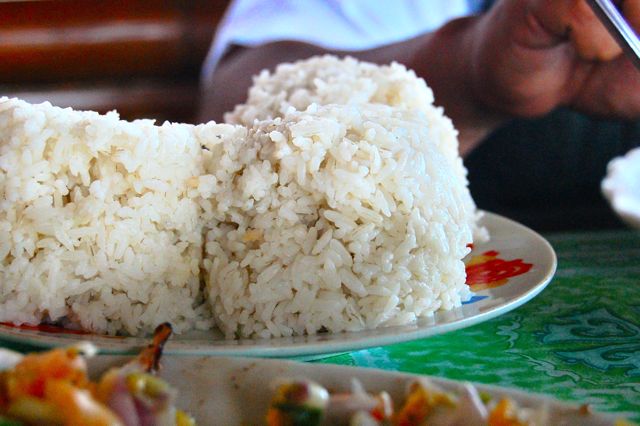
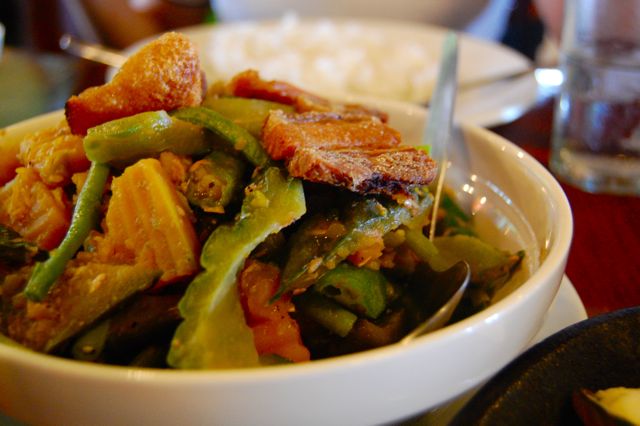
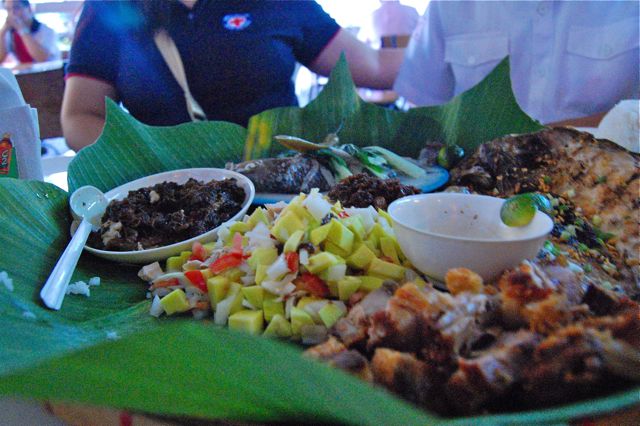
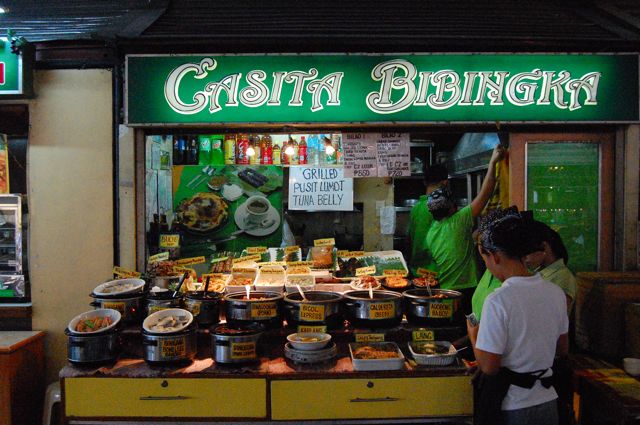

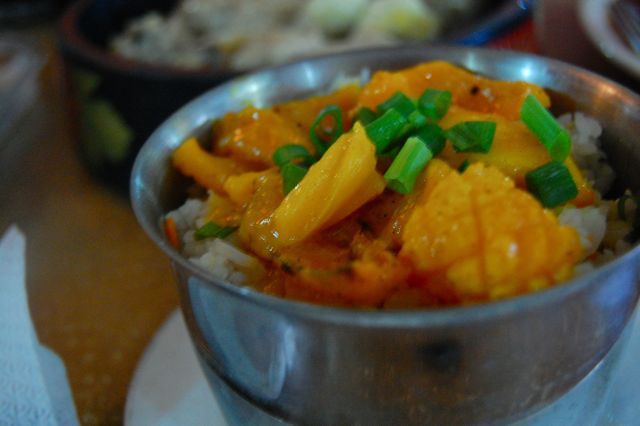

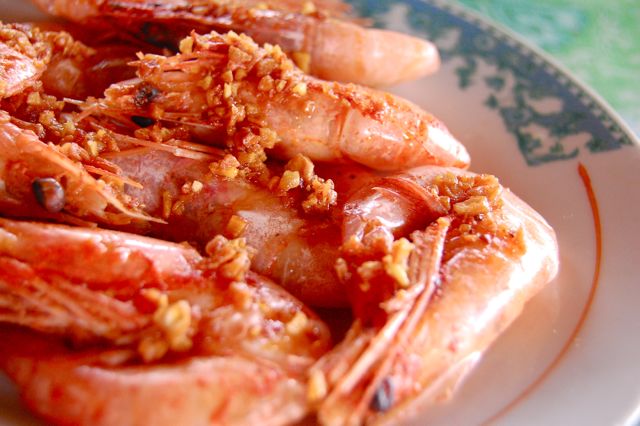
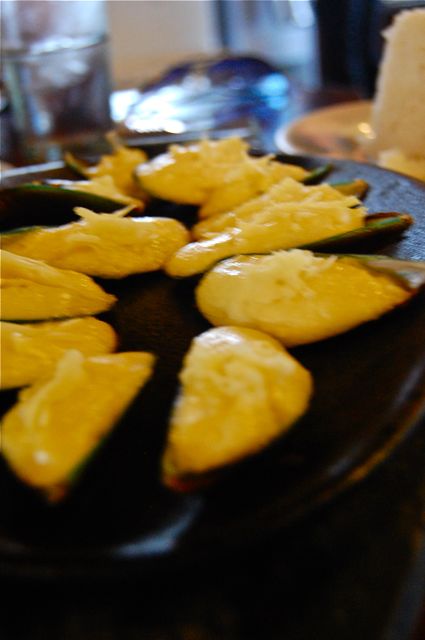
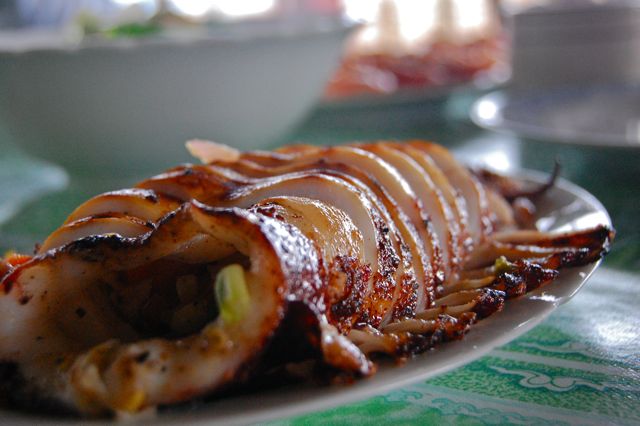
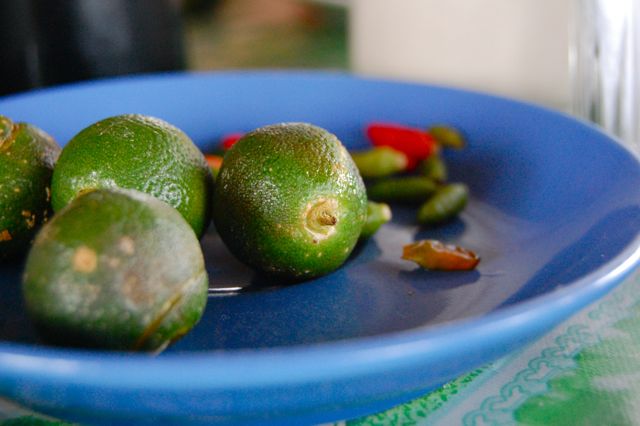
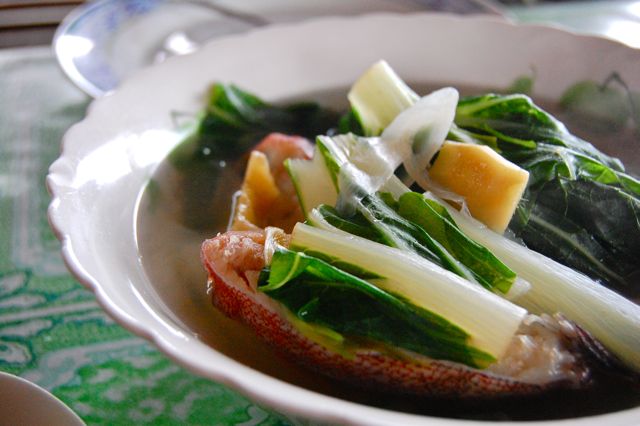
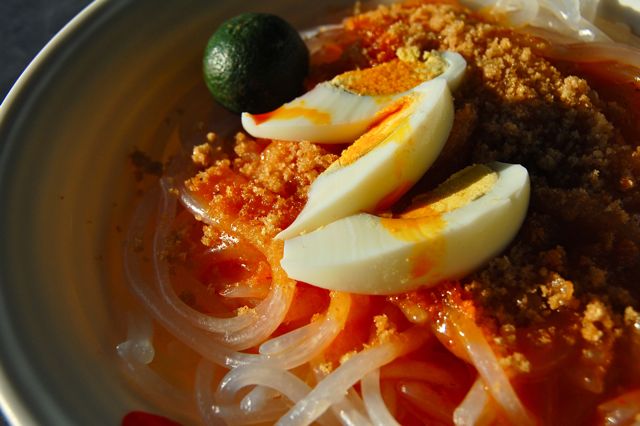
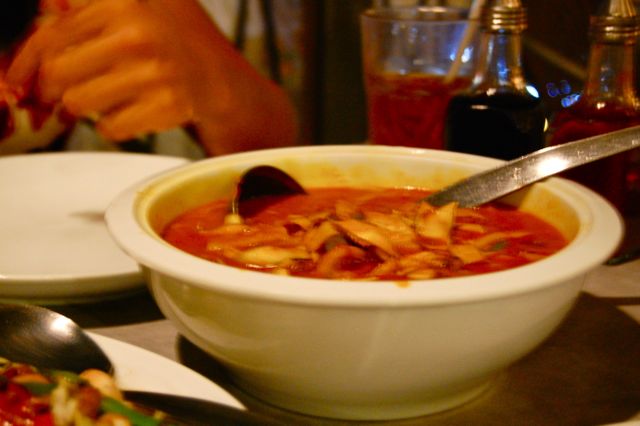
I love this post. You know how to make one crave food, you should totally be a food critic! <3